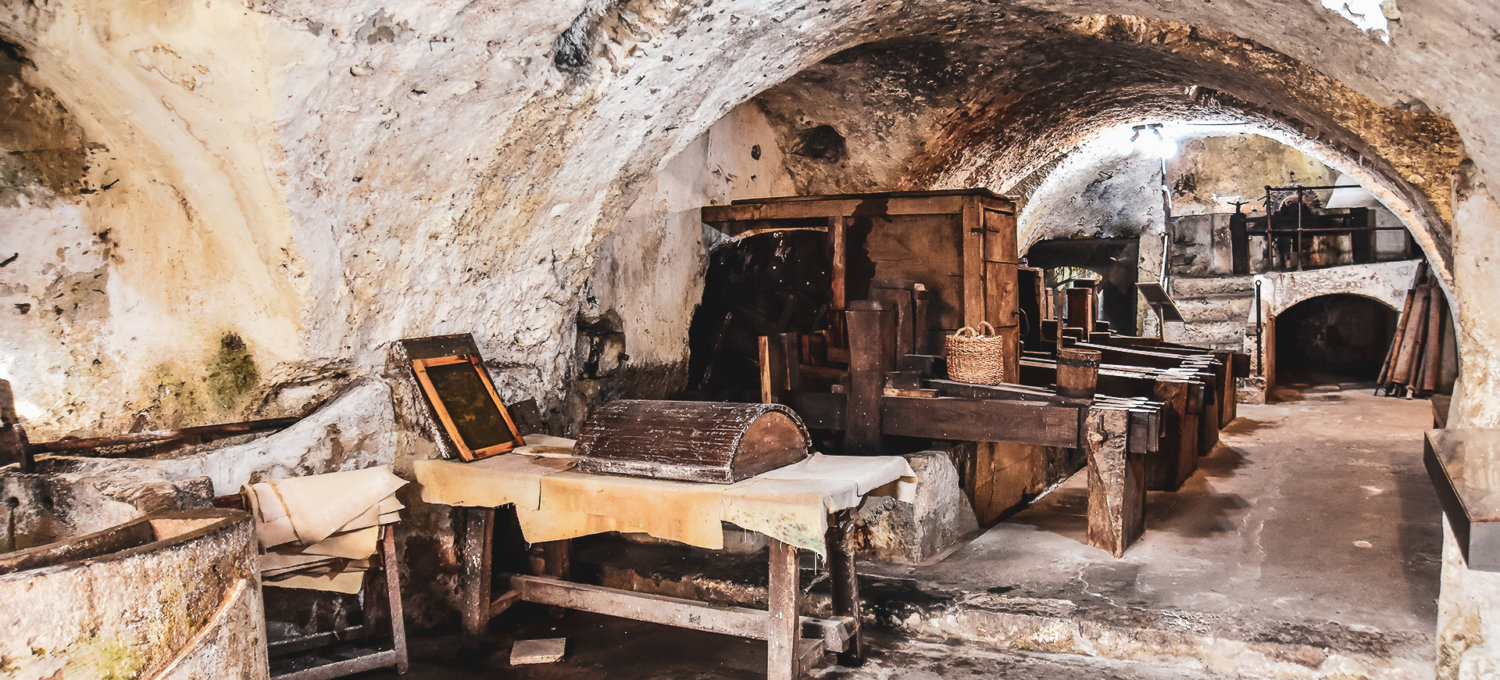Die wunderschön gewundene Amalfiküste ist auf der Wunschliste vieler Seereisender – und das absolut zu Recht. Besonders das Städtchen Amalfi ist für Segler und Kreuzfahrttouristen ein unwiderstehlicher Anziehungspunkt. Etwas versteckt vom Touristentrubel der Gassen liegt ein Geheimtipp: das in einer ehemaligen Papiermühle gelegene Papiermuseum. Denn Amalfi hat eine reiche Historie in der Herstellung der besten Papiere der Welt. Sogar noch heute hält der Papst für Schriftstücke immer wieder Papierbögen aus diesem Ort in den Händen.
Ruhig ist es hier unten. Ein paar Spinnen krabbeln noch schnell in die Ritzen des alten Gemäuers, als wir eintreten. An diesem heißen Sommertag ist die Kühle der Katakomben eine Wohltat für uns. Um uns herum stehen alte Maschinen aus Holz und schwerem Stein, die schon vor einigen Jahrzehnten ihre letzten Runden gedreht haben. Über viele Jahre war die Papierherstellung rund um Amalfi ein florierendes Handwerk, geprägt von Prestige, Reichtum und unvergleichlichem Können. Für einige Momente lässt unser Besuch im „Museo della Carta“ diese alte Zeit der Papierherstellung erahnen. Fast meint man das träge Hämmern der Schlagbolzen und das Plätschern der Mühlräder zu hören.
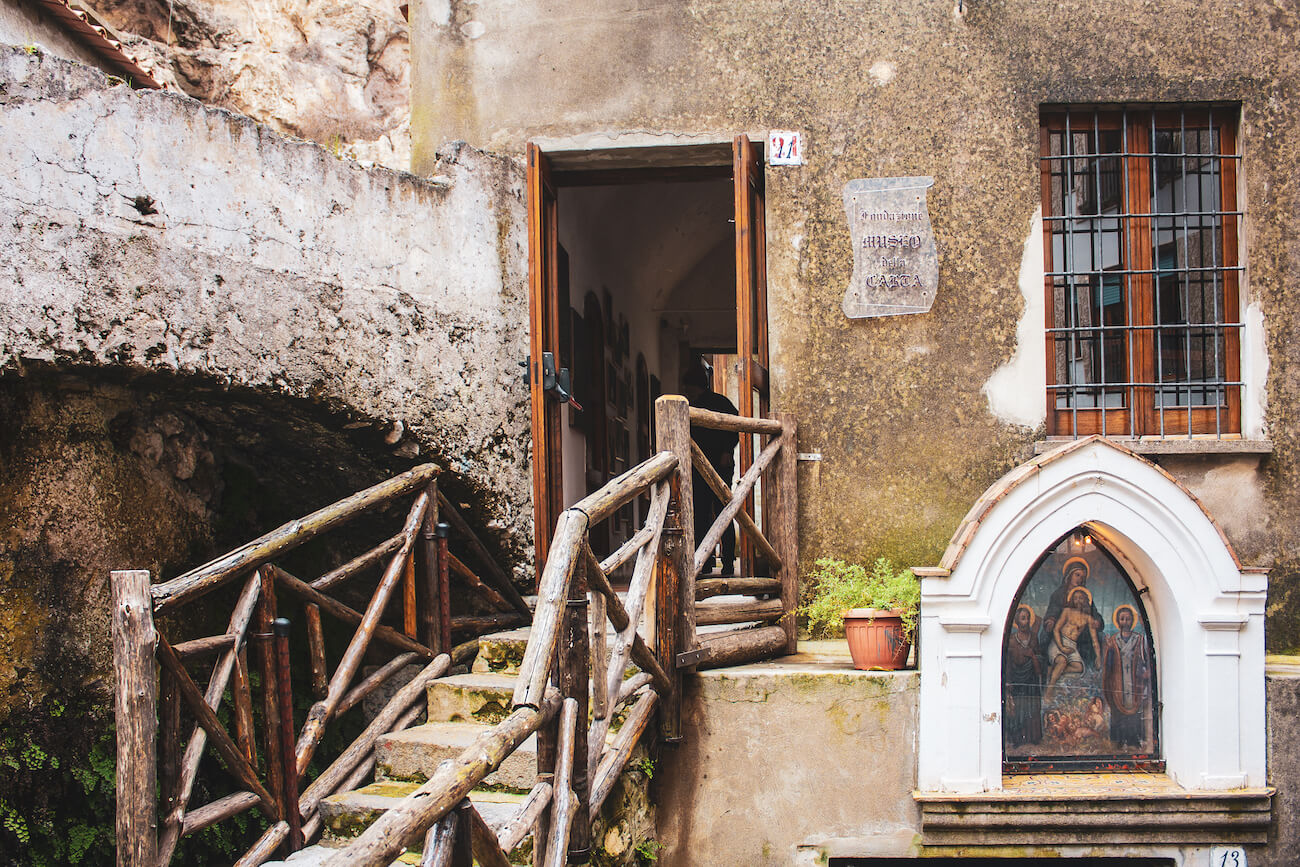
Papiermuseum „Museo della Carta“ – ein Stück alte Kulturgeschichte
Nur wenige hundert Meter vom Zentrum Amalfis entfernt liegen die Katakomben, in denen wir uns befinden. Ganz am Ende der Hauptstraße Via Lorenzo d‘Amalfi, vorbei an Lädchen und den letzten Hotels, schmiegt sich linker Hand das unscheinbare Gebäude aus dem 13. Jahrhundert an den Felsen. Wer neben dem Dom, den berühmten Stränden und engen Gässchen ein Faible für Kulturgeschichte hat, sollte die Stunde extra für das Museum einplanen. Denn die Papierherstellung ist eine Verbindung zu längst vergangenen Zeiten als mächtige Seerepublik. Amalfi war immerhin dank der intensiven Beziehungen zu Byzanz über 200 Jahre der Dreh- und Angelpunkt in Italien. Diese Handelsverbindungen brachten das Handwerk der Papiererzeugung früh in die Küstenregion. In ihrer Glanzzeit waren über 60 Papiermühlen im Regierungsgebiet angesiedelt. Das kostbare Handelsgut wurde von dort aus ab dem 12. Jahrhundert in ganz Westeuropa verbreitet.
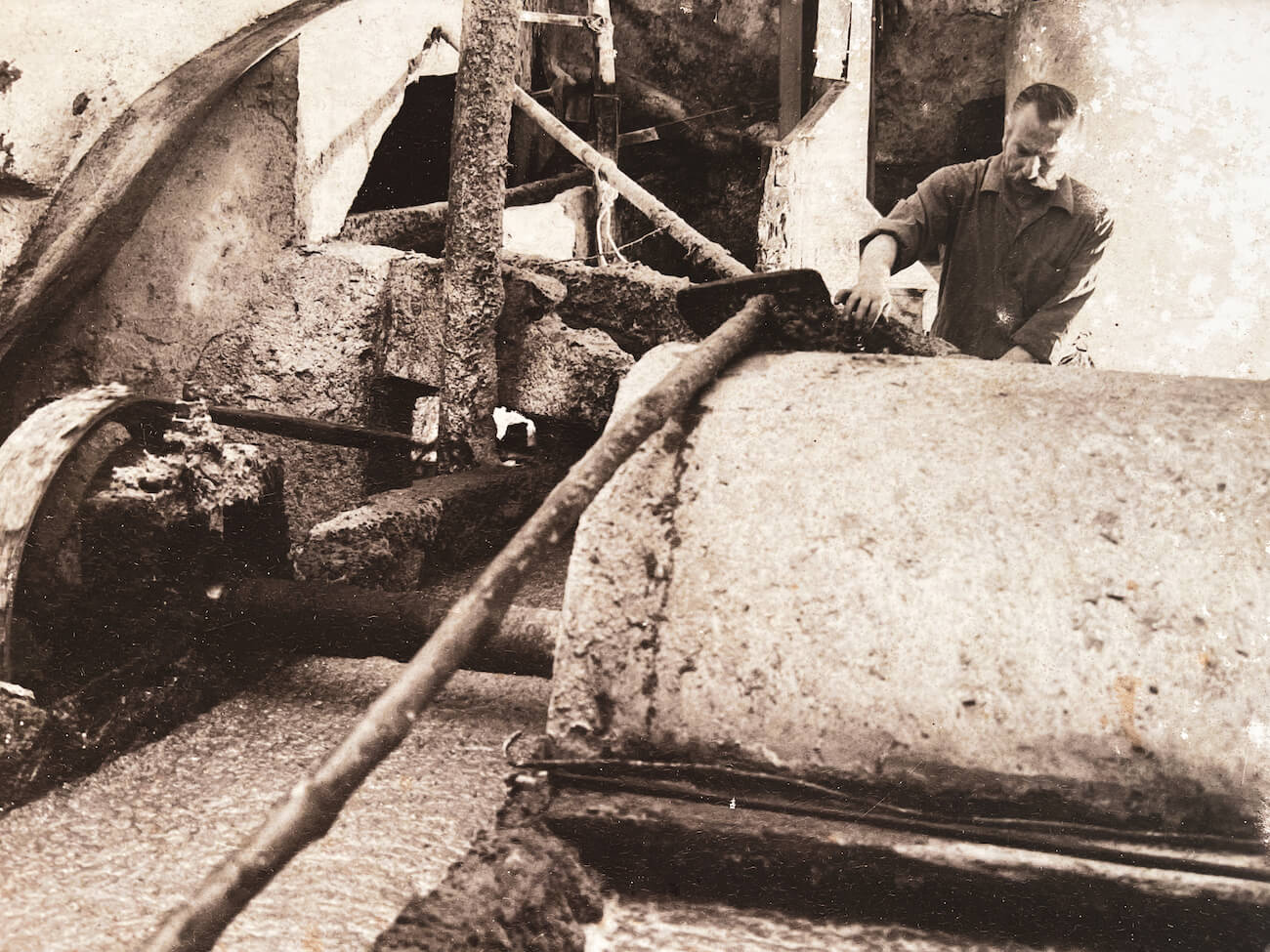
Upcycling im 12. Jahrhundert – vom Lumpen zum Luxusgut
Bei der Führung durch die steinernen Mauern staunen wir besonders über den Erfindungsreichtum der alten Papierhersteller. Statt teure Baumwolle aus fernen Ländern zu beziehen, setzten die Amalfitaner für das Papier auf alte Lumpen und Kleidungsfetzen. Eine ganze Berufsgruppe bildete sich in der Gegend, die von überall Stoffreste aus Baumwolle, Leinen, Hanf und Jute sammelten und an die Mühlen verkauften. Da die alten Kleidungsstücke keinerlei moderne Fasern wie Nylon oder Polyester enthielten, war die organische Basis für die Papierherstellung ideal.
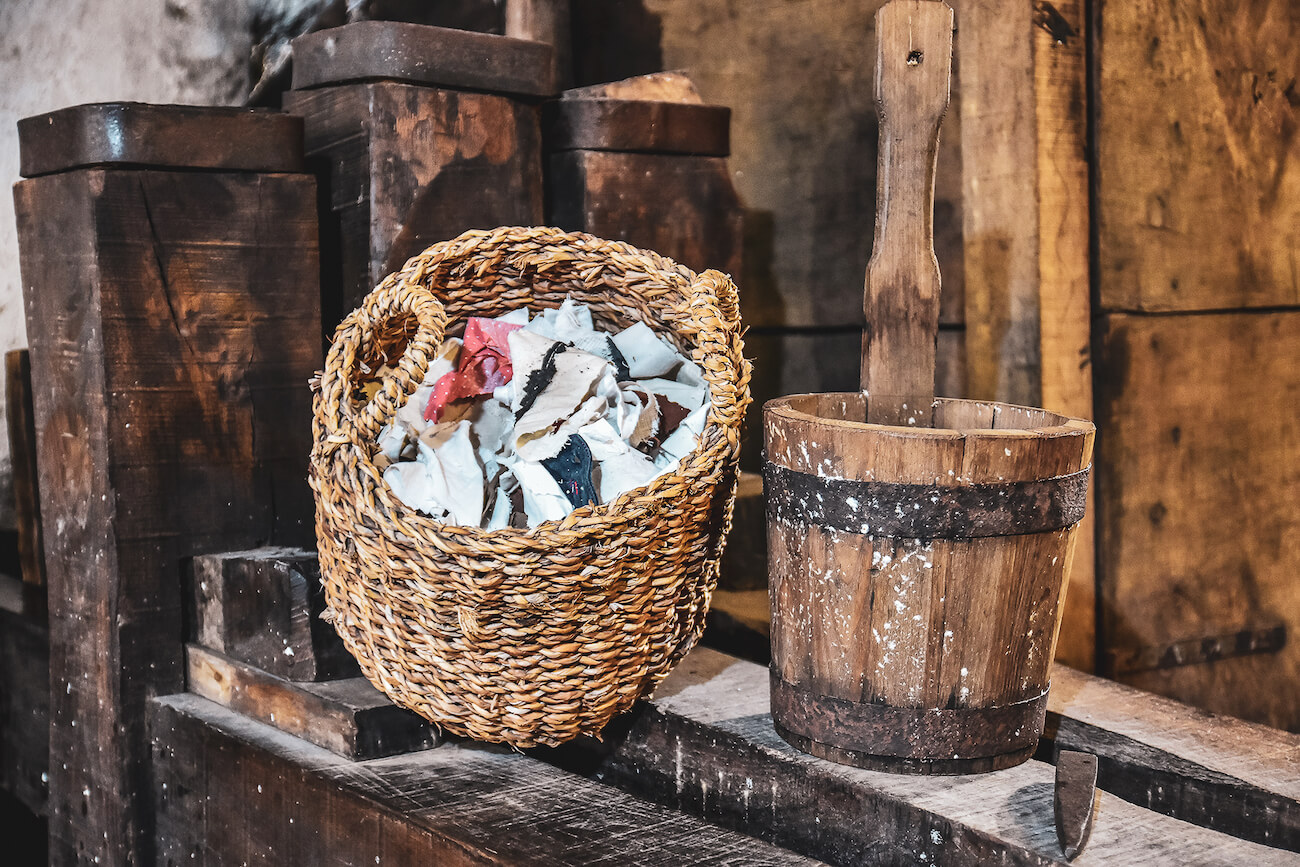
Diese wurden so lange zerkleinert, bis sie zum typischen Faserbrei wurden.
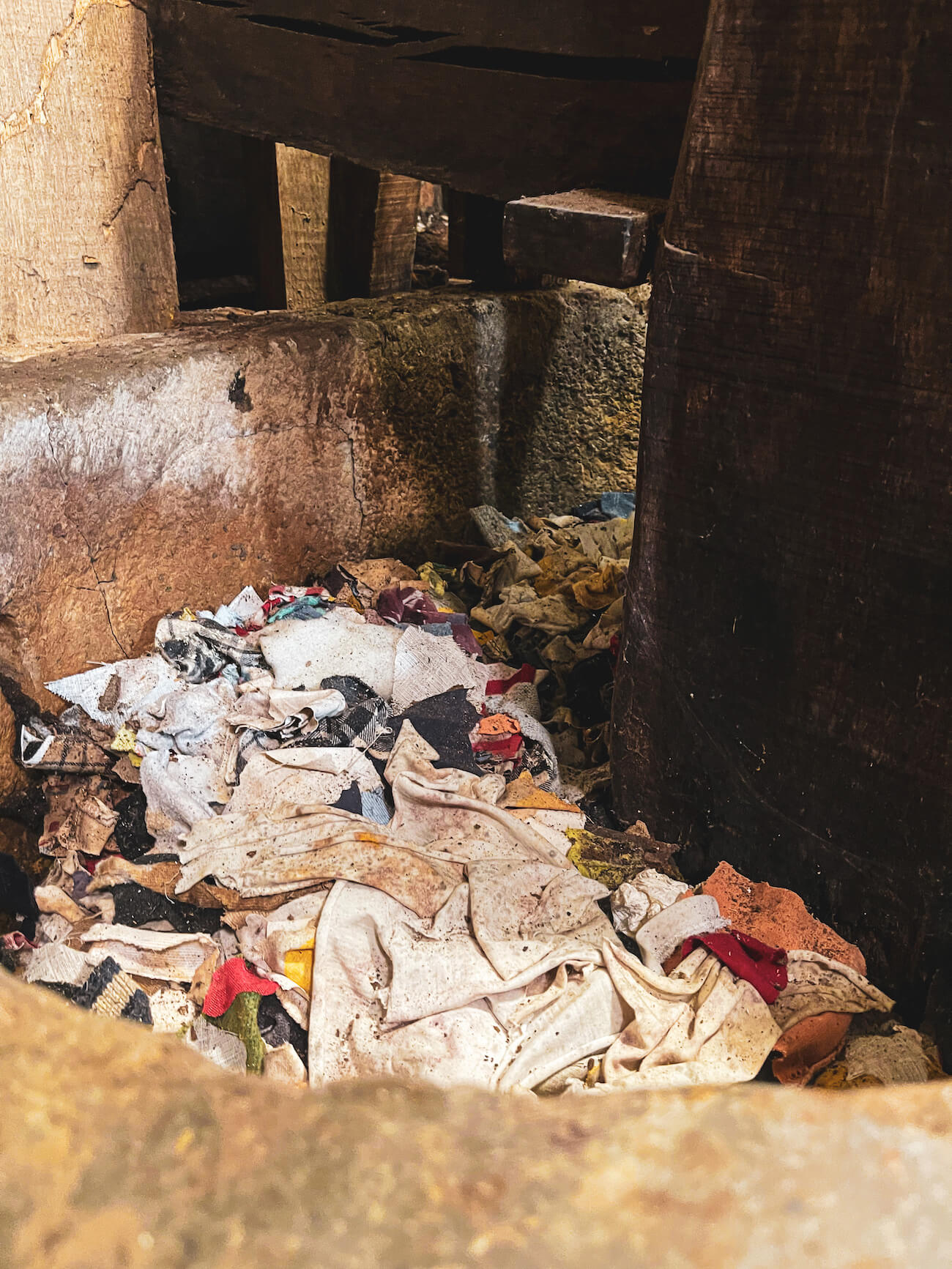
Viele verschiedene Zerkleinerungstechniken rückten den Stoffen in den Mühlen zu Leibe. Der entstandene Faserbrei war perfekt für das typische Amalfi-Papier. Vom Abfallprodukt zum Luxusgut für Gelehrte, Kleriker und Reiche – eine äußerst schlaue Idee aus finanzieller Sicht. Papier aus Amalfi war somit viel günstiger als Papyrus und gegerbte Tierhäute.
Erst ab ca. 1800 stiegen die Papierproduzenten auf die noch günstigere Zellulose um. Bis dahin war die Papierherstellung in der Tat ein Upcycling-Beispiel par excellence.
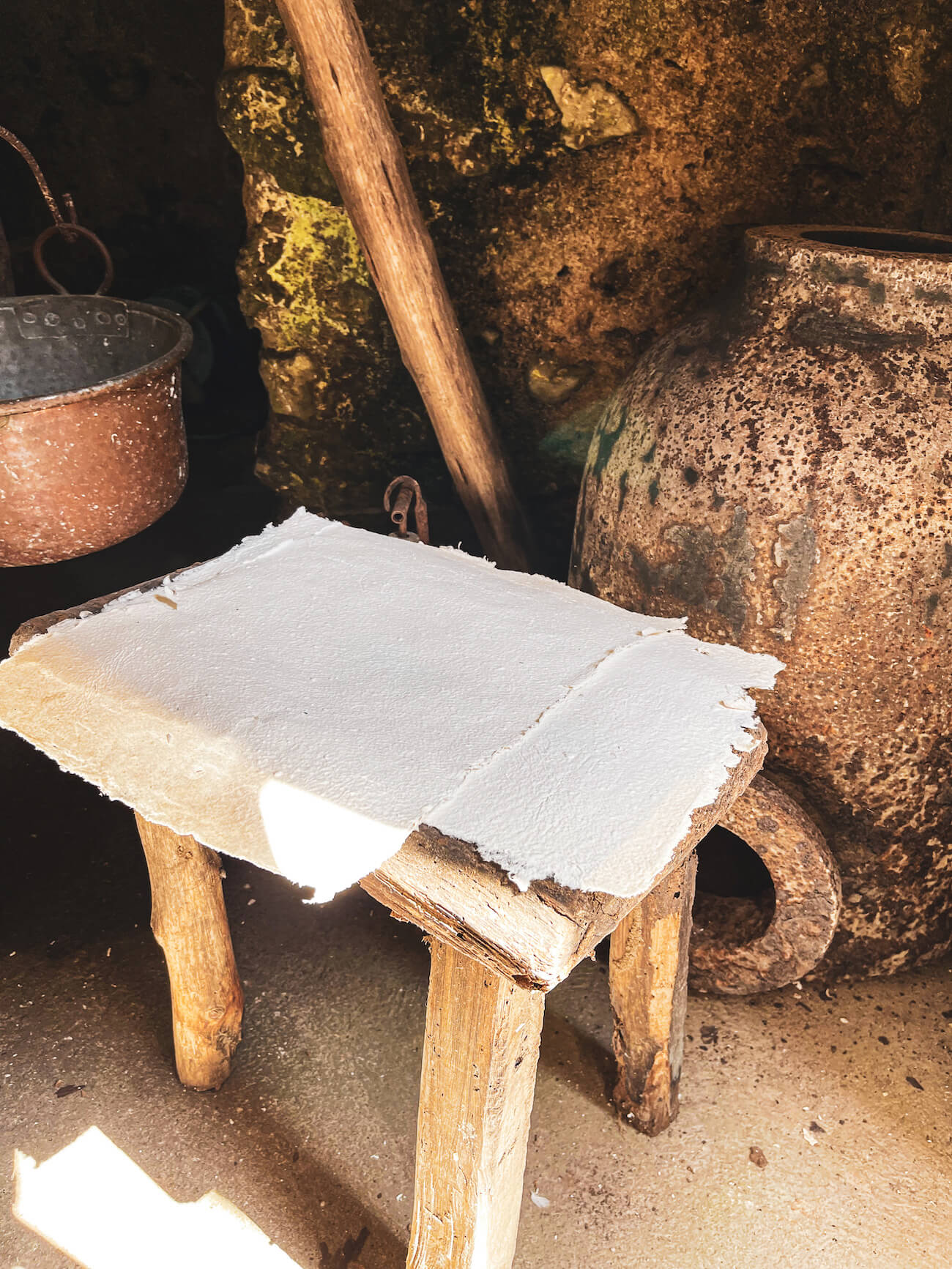
Jedes Blatt war anstrengende Handarbeit
Während der Führung durch das Museum erhält man einen sehr guten Eindruck in die vielen Arbeitsschritte, die ein einzelnes Blatt Papier abverlangte. Aus den Kleidungsresten mussten per Hand zunächst alle Knöpfe, Nägel und Stickereien entfernt werden. Die verbliebenen Stoffe mussten wieder und wieder aufgehellt werden. Um letztendlich zig Stufen der Bearbeitung zu durchlaufen.
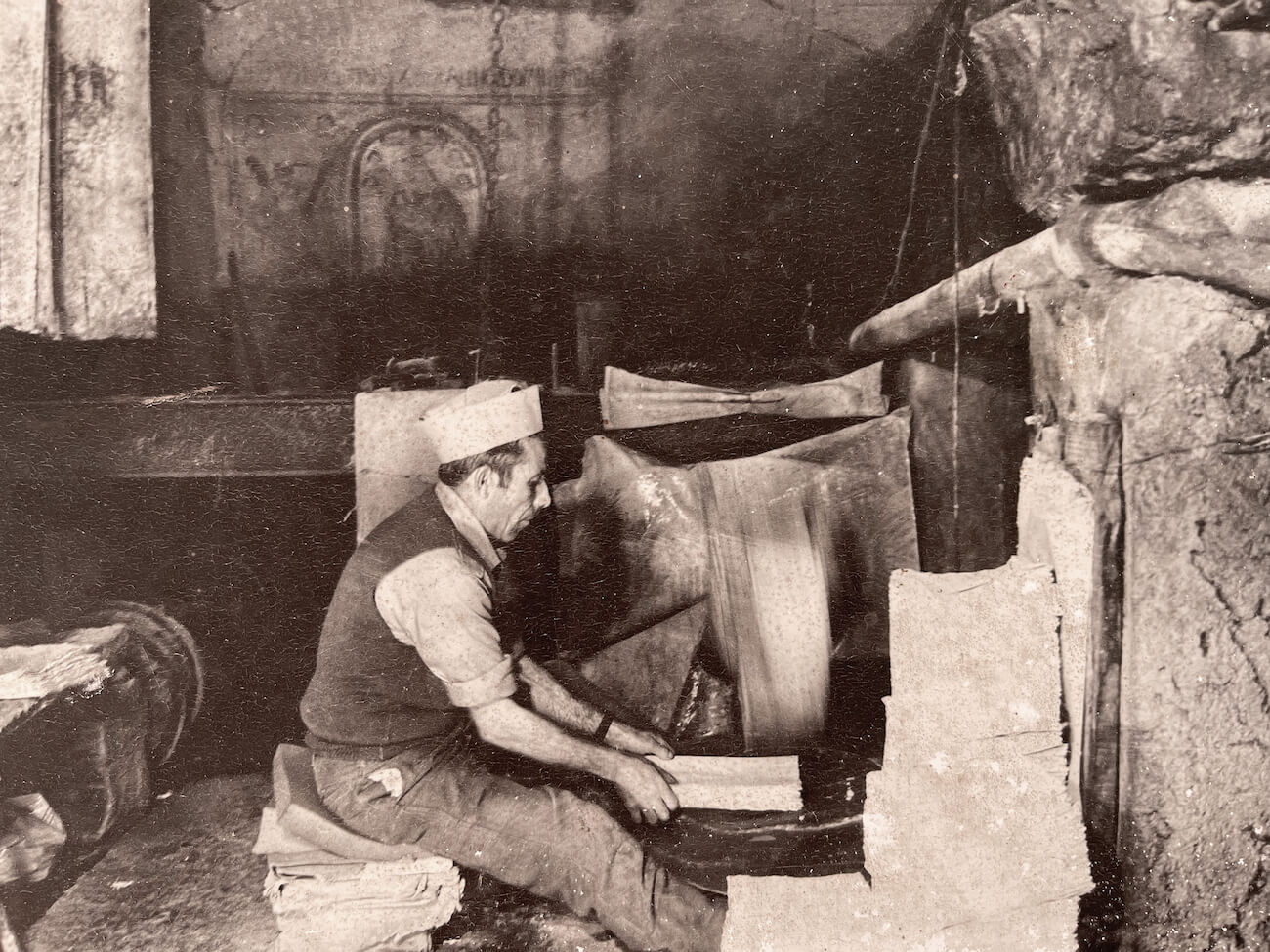
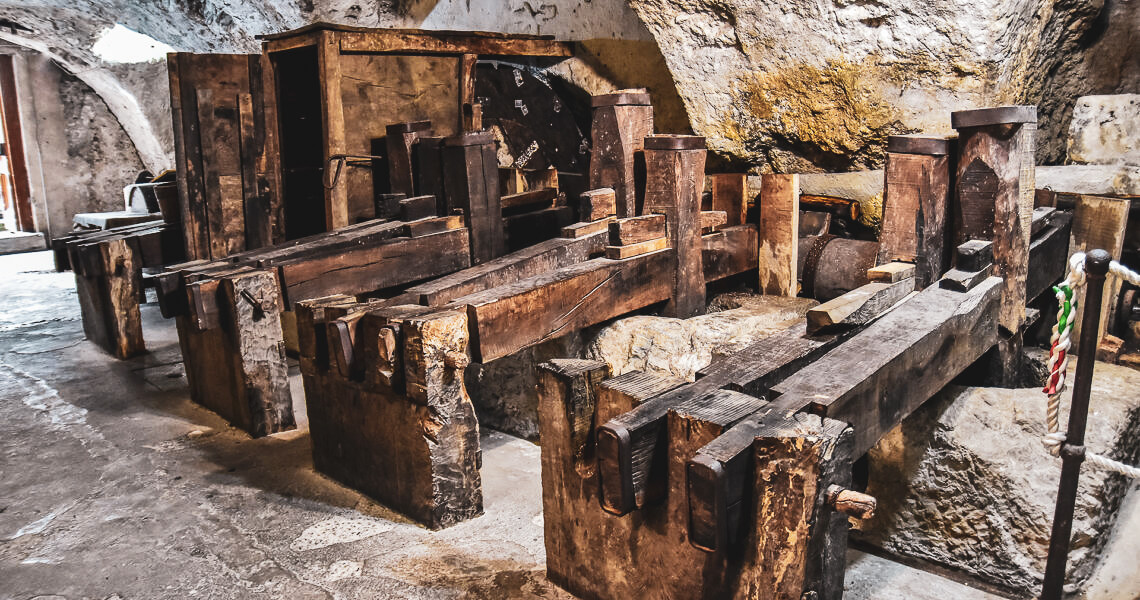
Das teure Papier war daher nur für betuchte Bürger verfügbar.
Im Keller sieht man noch die ursprünglichen hölzernen Hämmer, die am Anfang für die Zerkleinerung genutzt wurden. Auch die weiteren Maschinen, die die Bearbeitung mit den Jahrhunderten einfacher machten, sind originalgetreu ausgestellt. Schwerfällig setzt sich der „Papierholländer“ in Bewegung, als unser Guide die Wasserschleuse öffnet. Diese Erfindung muss eine Wohltat gewesen sein für die Papiermacher. Scharfe Klingen zerkleinerten die Lumpen viel schneller und auch günstiger.
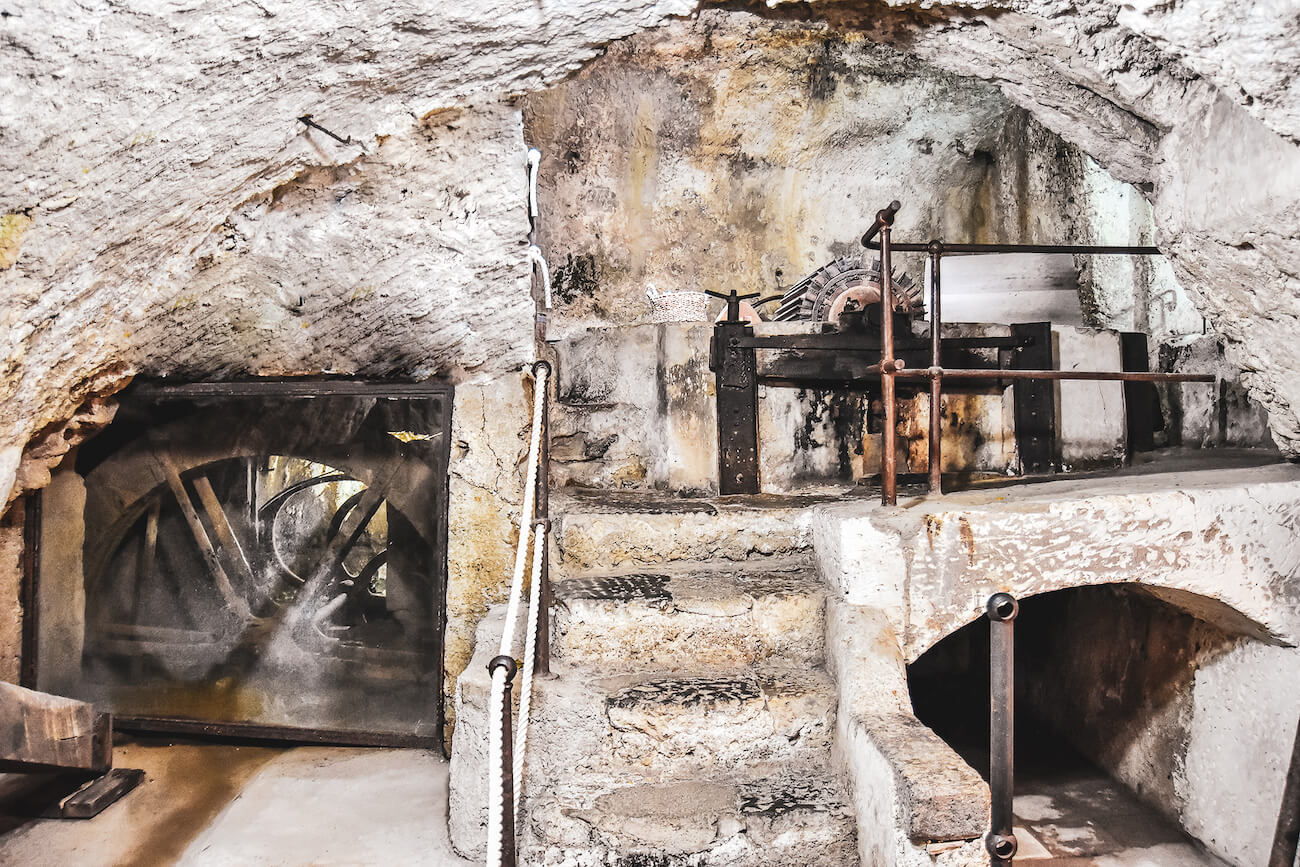
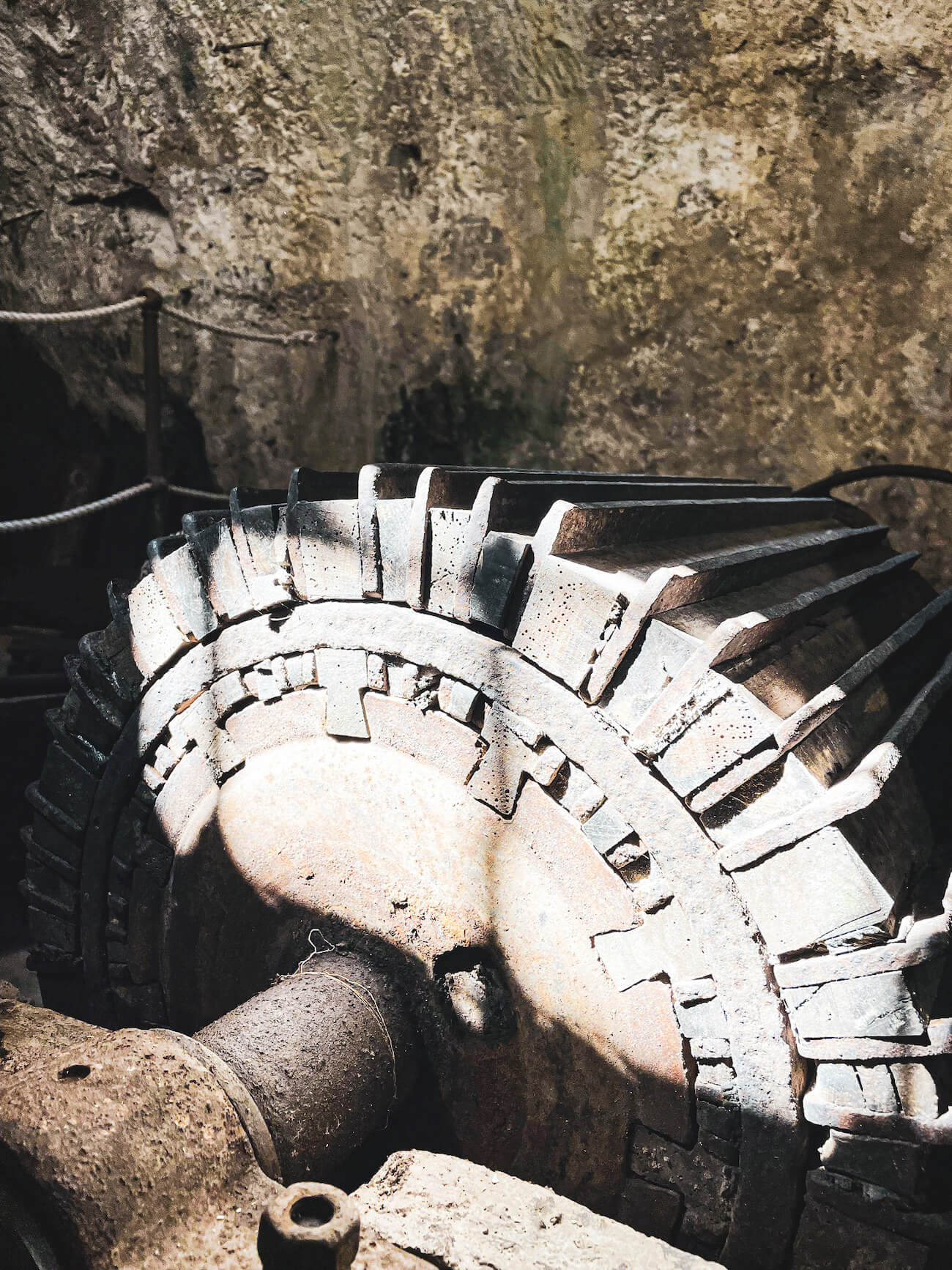
Papierschöpfen für Besucher zum Mitmachen
Ein schöner Clou des Museums ist das Becken, in das wir tief eintauchen dürfen und nun „unser“ Papier aus dem Brei schöpfen können. Theoretisch könnten wir nach einigen Wochen der Trocknung diese Blätter abholen. Es ist allerdings fraglich, ob man auf unseren löchrigen Exemplaren tatsächlich schreiben könnte. Talentierte Papierschöpfer sind an uns wohl nicht verloren gegangen. Lieber holen wir uns professionelle Exemplare am Ausgang im Shop. Diese werden in der einzig verbliebenen Papiermühle des Ortes angefertigt, der „Cartiera F. Amatruda“, wenige Meter hinter dem Museum.
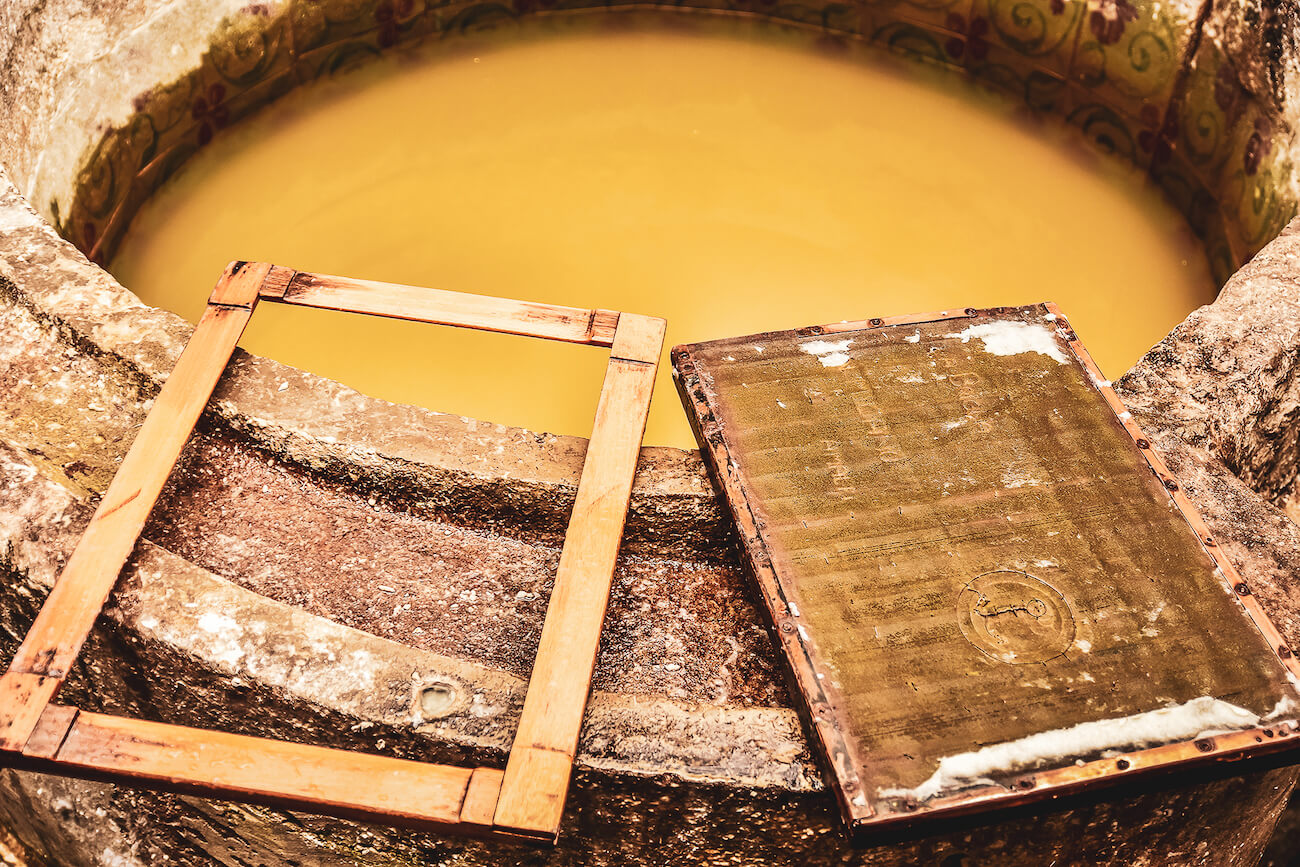
Die beiden Teile werden verbunden, um die Fasern aus dem Wasser schöpfen zu können.
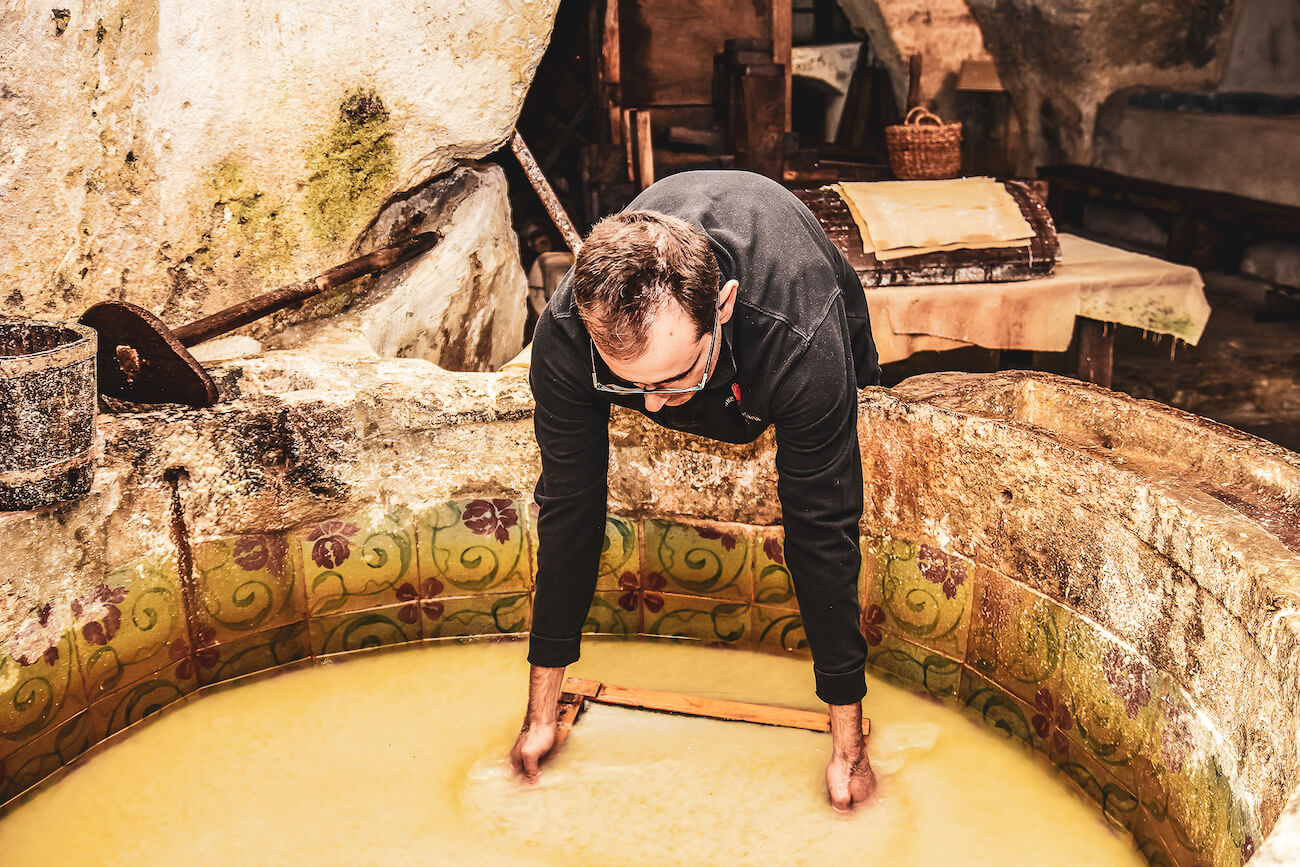
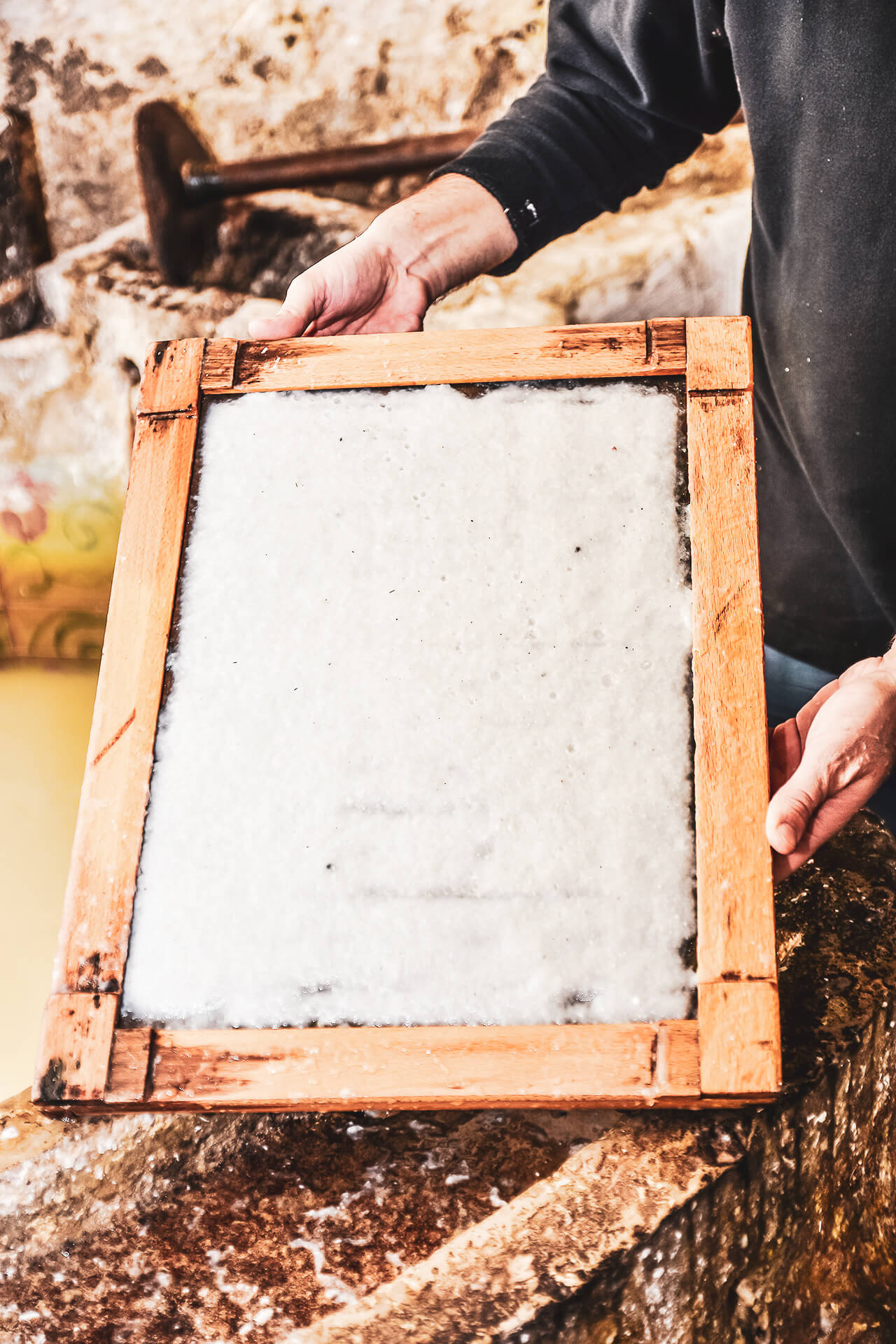
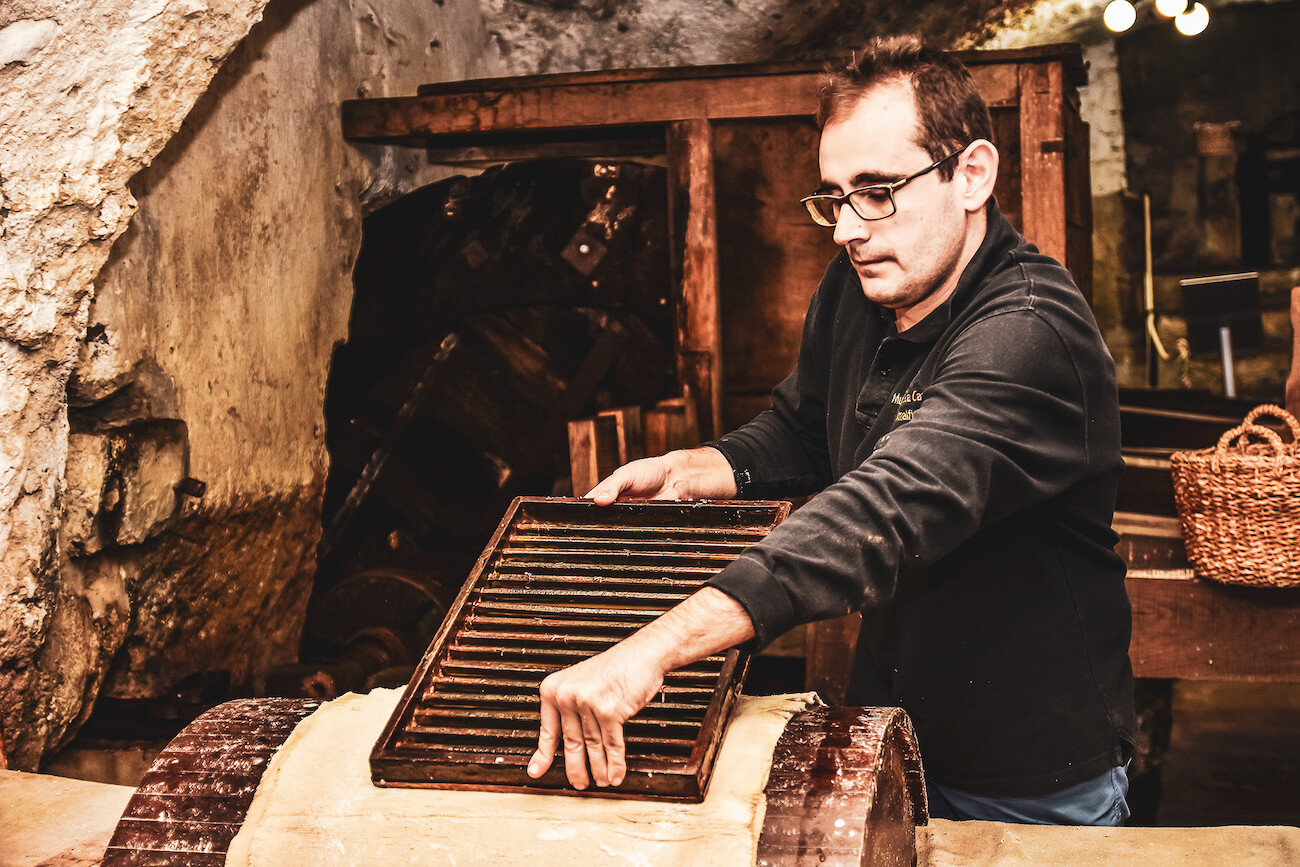
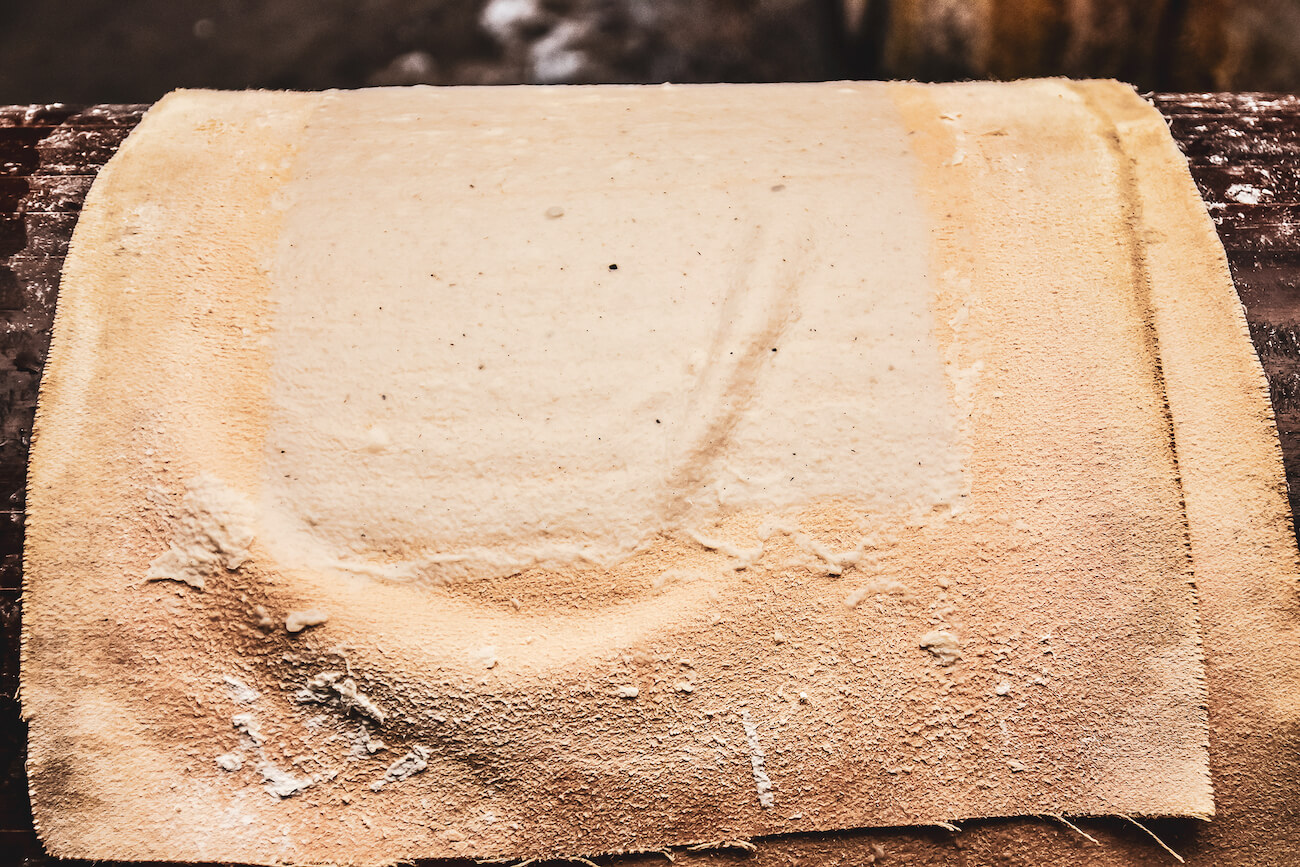
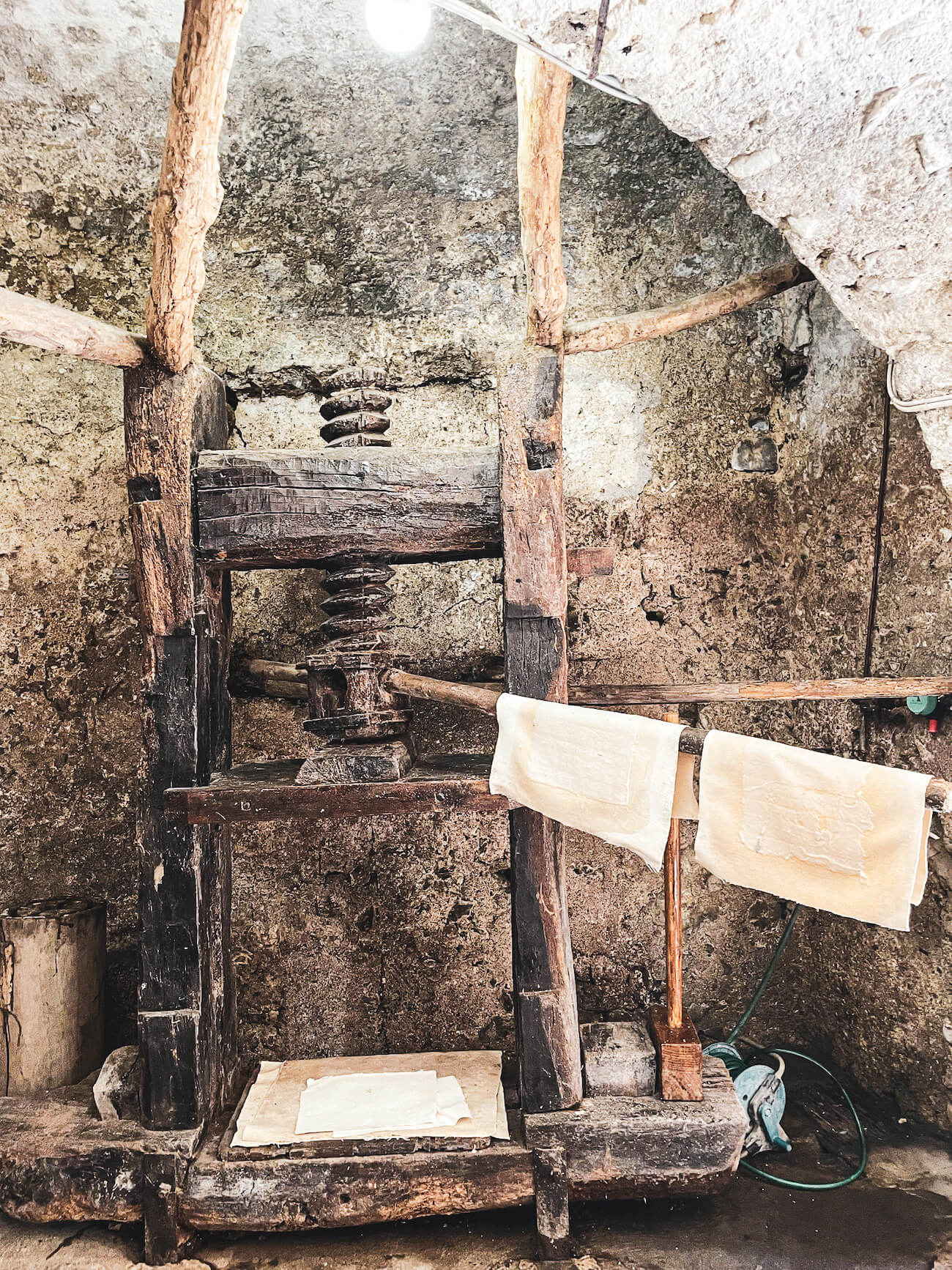
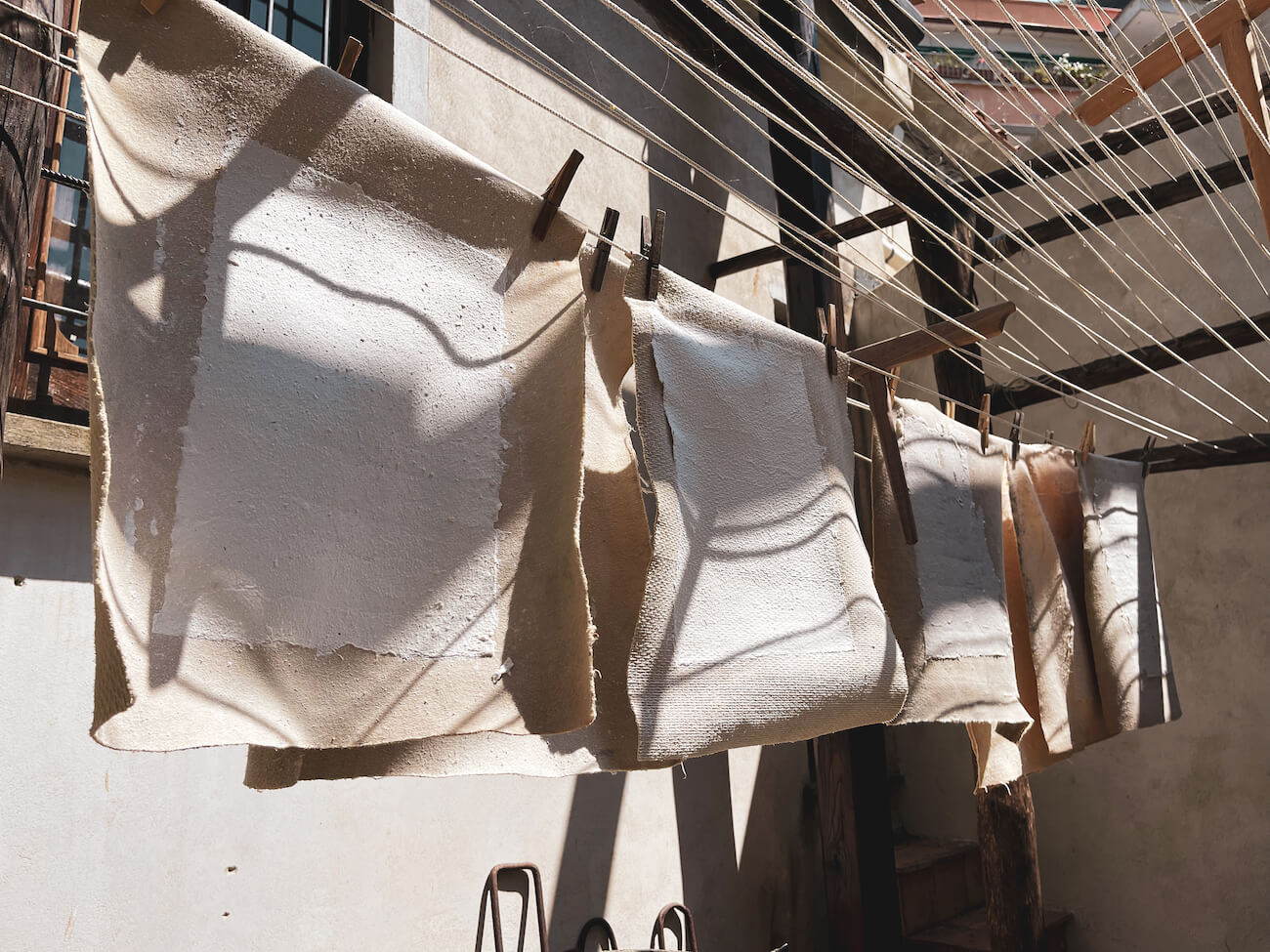
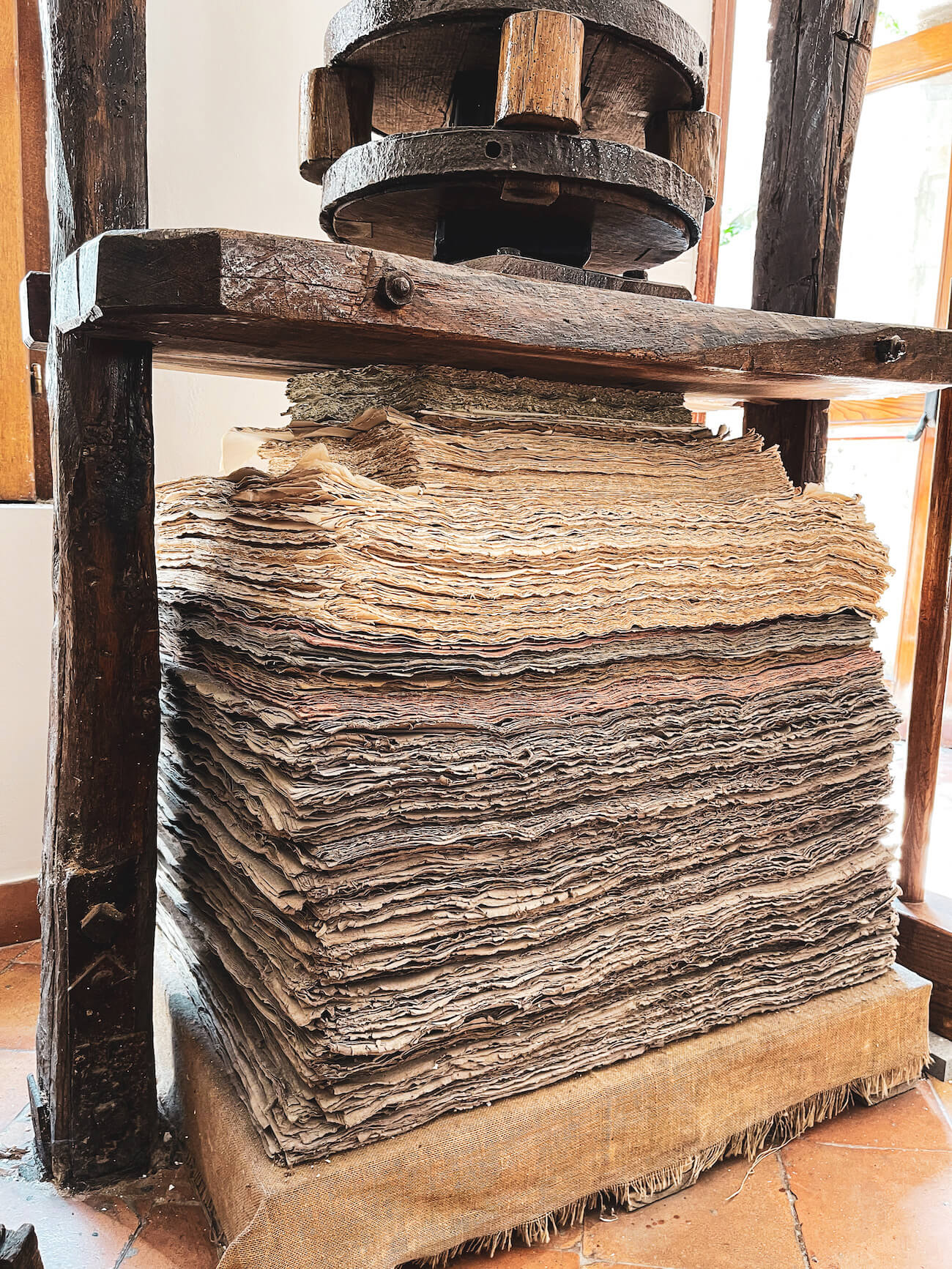
Das Papier der Päpste
Die Papierproduktion in Amalfi war in seiner Glanzzeit ein absoluter Erfolg. Dank der Wasserzeichen hat man Beweise, dass die ältesten Schriftstücke auf Amalfi-Papier um das frühe 12. Jahrhundert entstanden sind. Nur Adlige, reiche Kaufleute und Geistliche aus dem Vatikan konnten sich das qualitativ hochwertige Material leisten. Diese Qualität hat den Papierfabriken auch nach dem politischen Untergang der Seerepublik das Überleben gesichert. Erst mit der industriellen Produktion ging die Bedeutung für den Großhandel immer weiter zurück.
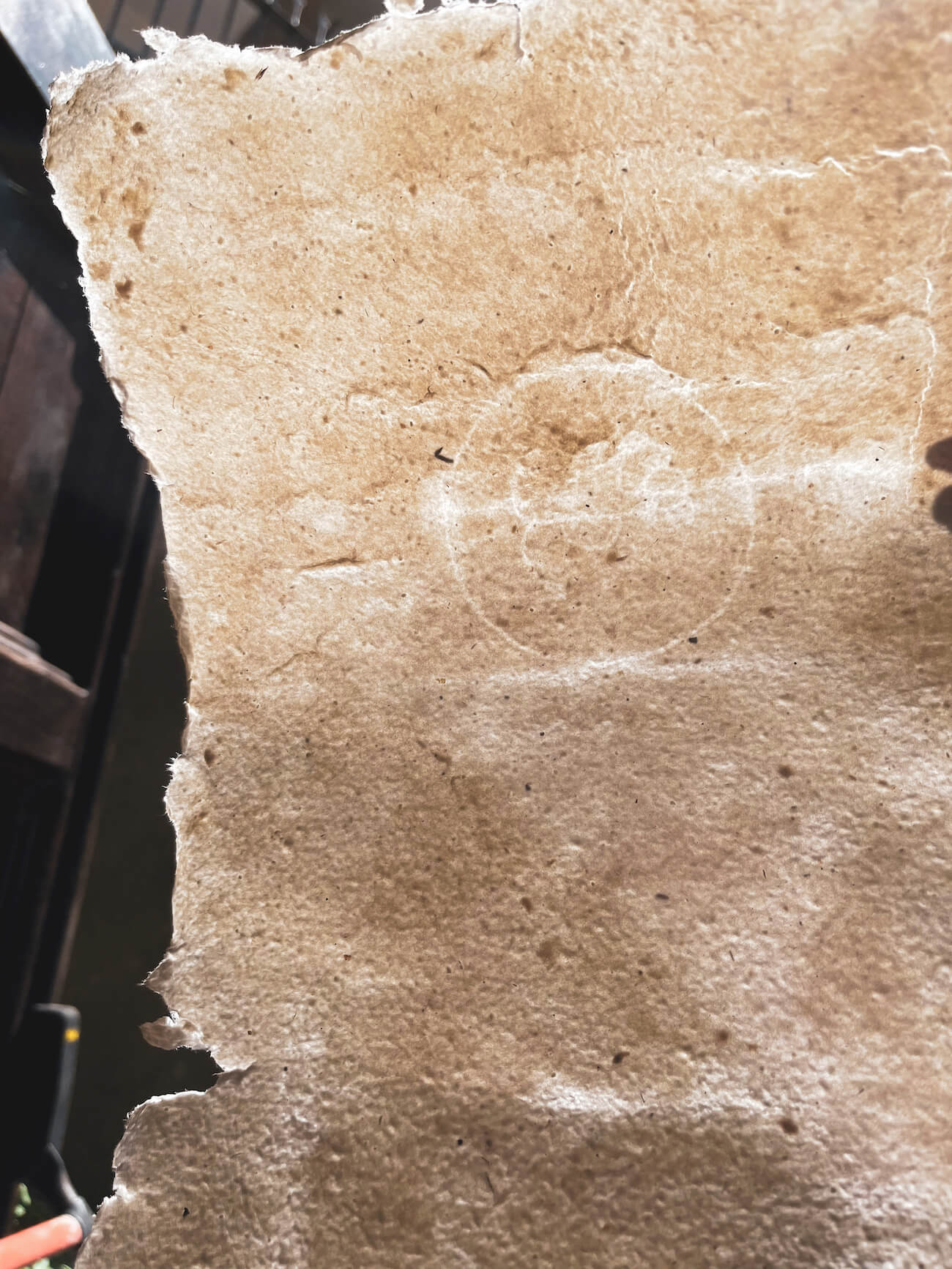
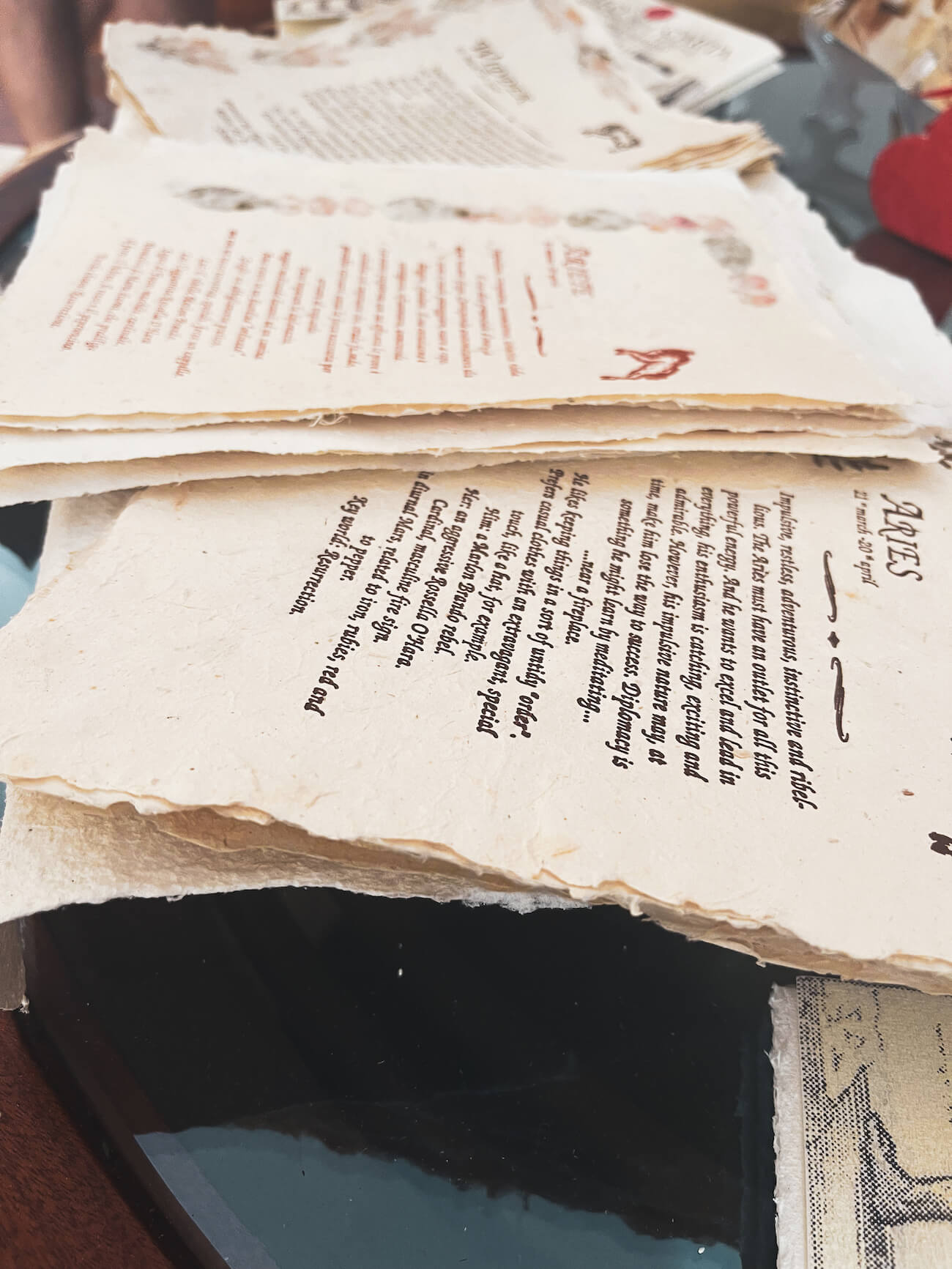
Einige ganz wenige Papierfabriken haben sich ihr Handwerk bewahren können. Für besondere Anlässe und Schriftstücke gönnen sich Kunden heute noch das typische Papier. Auch wenn nun moderne Herstellungsmethoden verwendet werden, sind die Eigenschaften hochgeschätzt. Künstler verwenden es für Zeichnungen, Brautpaare für besondere Hochzeitseinladungen. Und der Vatikanstaat bestreitet nach wie vor seine Korrespondenz auf dem Papier der Päpste. Ein kleines Notizbuch wandert als Souvenir in unsere Tasche – wer weiß, welch bedeutende Reisenotizen wir darauf hinterlassen werden.
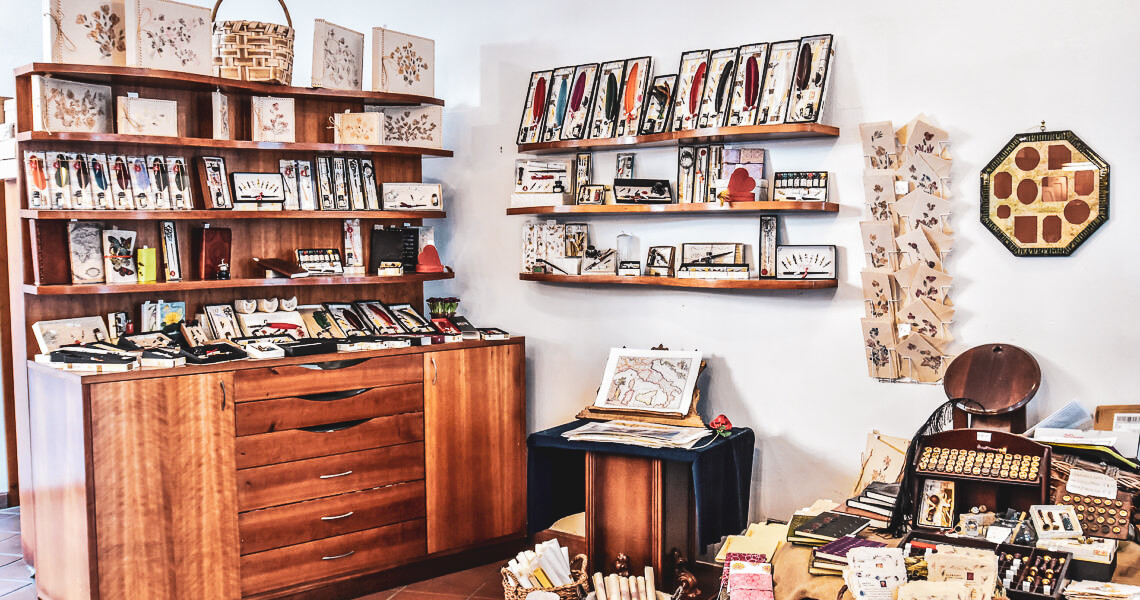
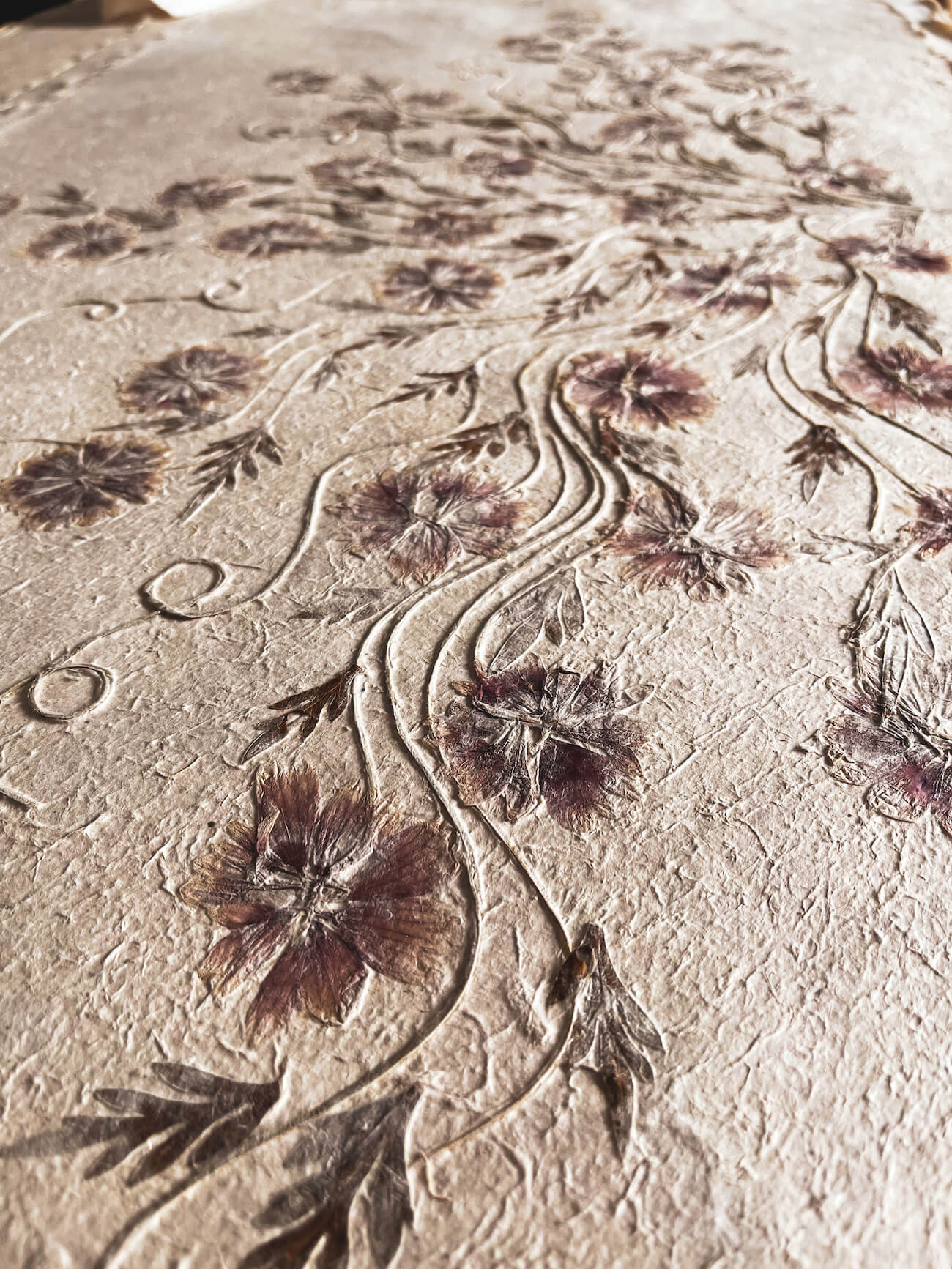
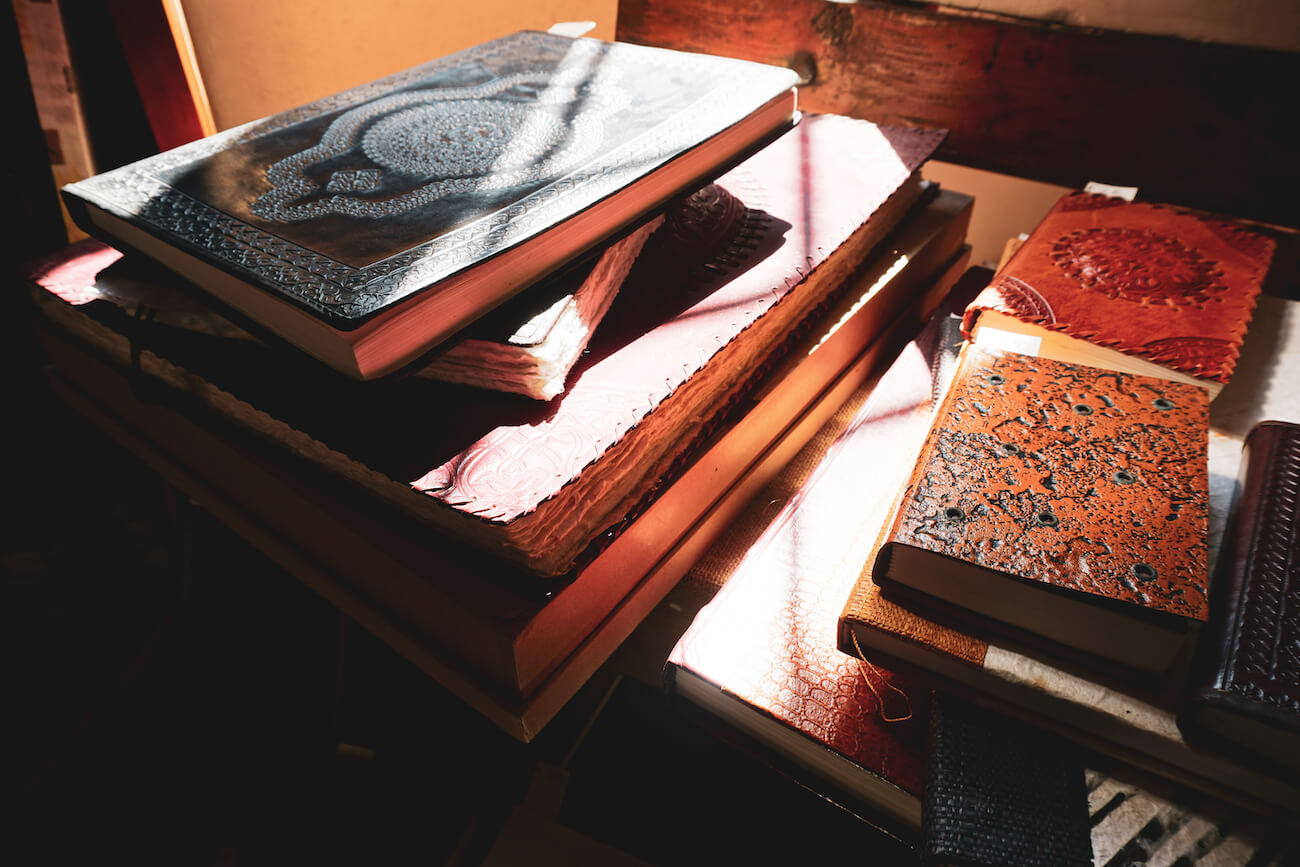
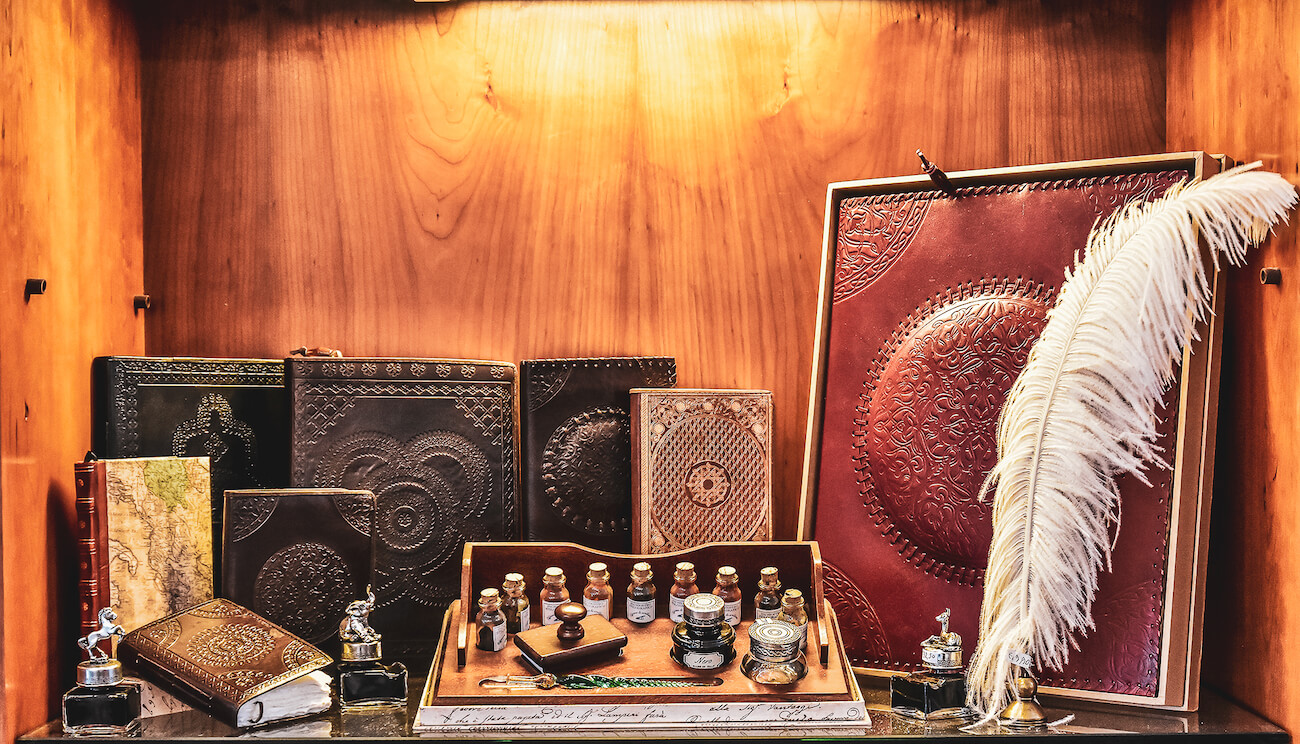
Tal der Mühlen – Valle dei Mullini
Wer Zeit hat, kann der Straße nach dem Besuch noch weiter bergan folgen. Steil ragen die Klippen empor und verengen den Weg immer mehr. Nun startet sozusagen das Industriegebiet des altertümlichen Amalfis. Denn am Fluss Canneto, der sich zwischen den Felswänden entlangschlängelt, standen nacheinander die zahlreichen familiengeführten Papiermühlen. Der Fluss war die Lebensader für die Papiermüller, denn die Reinheit des Wassers war ausschlaggebend für die hohe Qualität des fertigen Produkts.

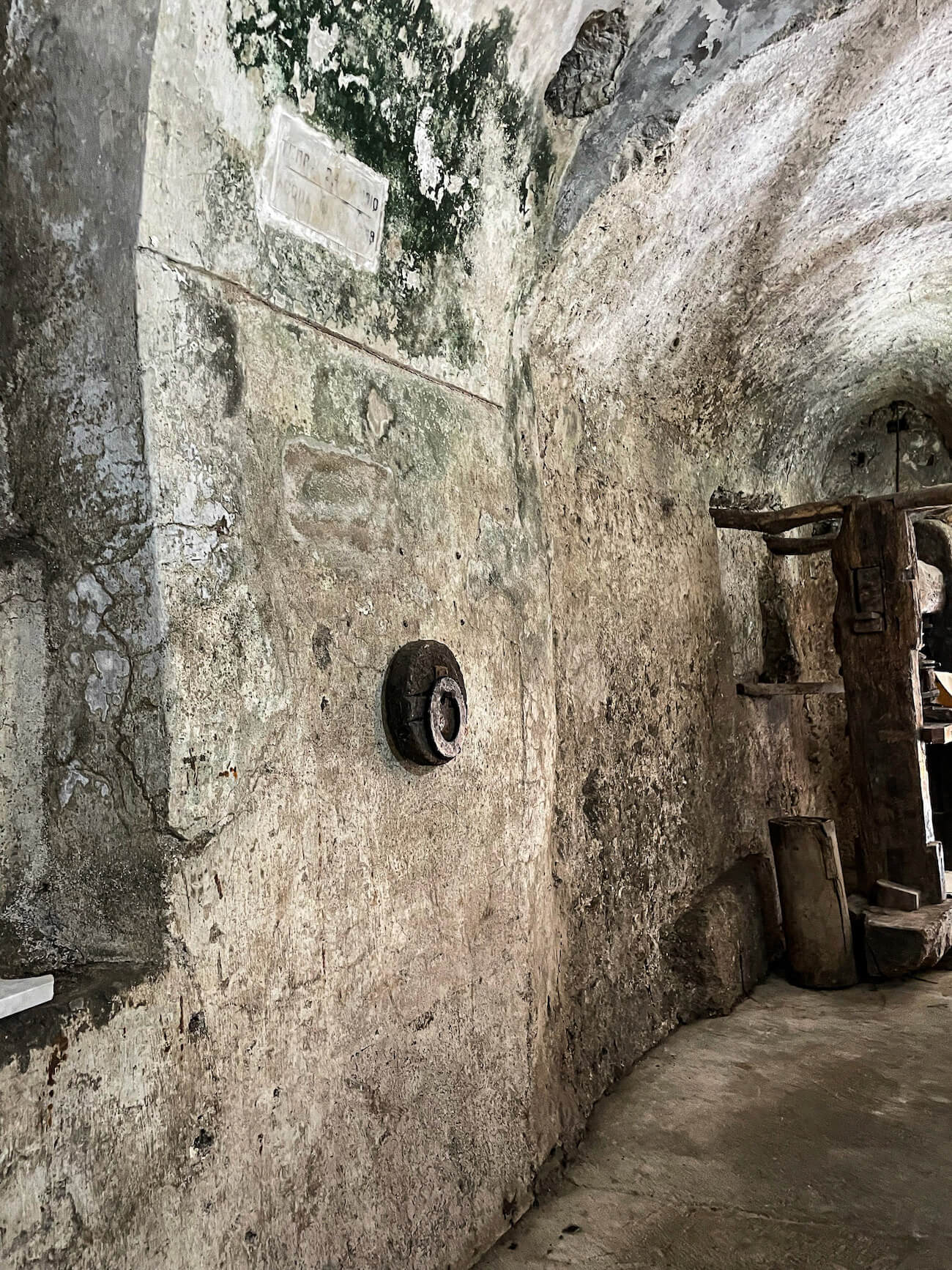
Heutzutage ist das Tal der Mühlen ein wunderschöner Ort zum Wandern und Entspannen. Ab und an sieht man noch verlassene Ruinen der alten Mühlen, die dem Ort etwas Mystisches verleihen. Sanft plätschert das Wasser dahin, die Bäume spenden Schatten und die Wege sind gut gekennzeichnet. Uns bleibt leider nicht viel Zeit für das Tal, denn die Rückkehr auf unser Schiff steht an. Eine ausgedehnte Erkundung kommt definitiv auf unsere Wunschliste für die nächste Reise an die Amalfiküste.
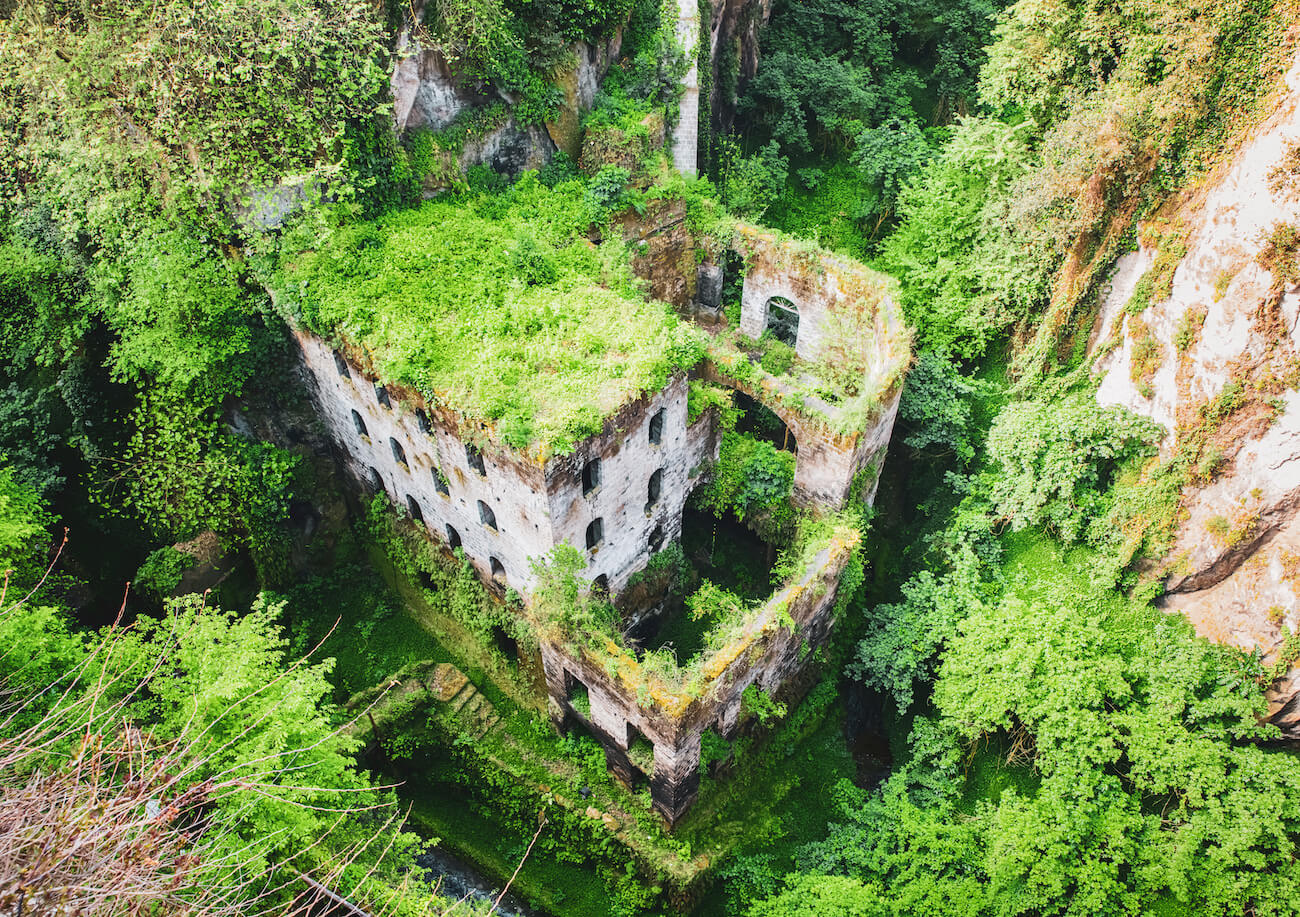
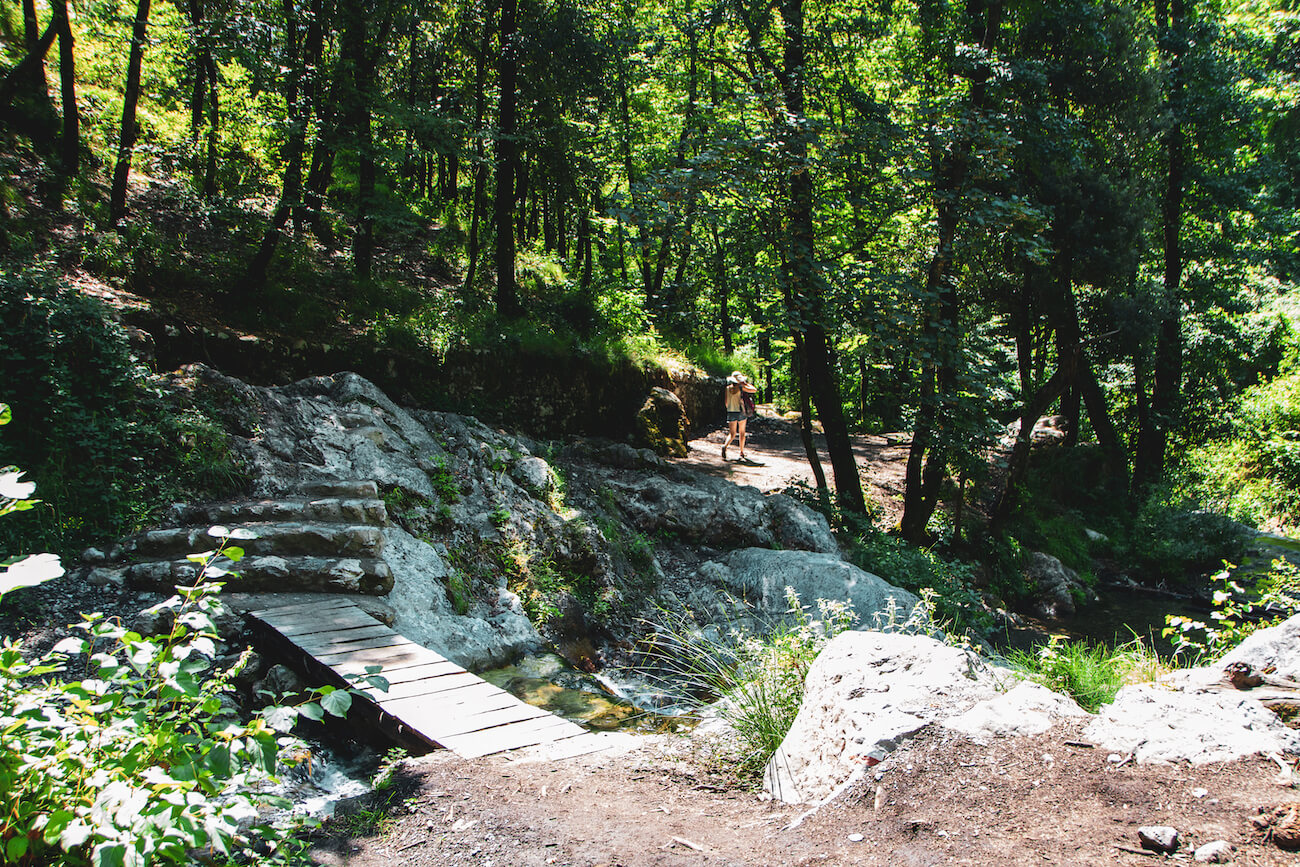
Dieser Programmpunkt kommt auf unsere Wunschliste für den nächsten Besuch.
Anreise vom Hafen
Große Schiffe legen in Neapel an und bieten Touren per Mini-Bus nach Amalfi an. Kleinere Schiffe und Segelboote können direkt im Hafen anlegen oder vor Anker gehen. Das Areal rund um den Hafen und den Strand ist ebenfalls Busparkplatz und Startpunkt für das Sightseeing in Amalfi und den Weg zum Museum. Das Papiermuseum ist gut ausgeschildert und zu Fuß innerhalb von 15 Minuten vom Domplatz erreichbar. Der Eintritt kostet wenige Euro, eine Führung per Guide ist Pflicht. Touren gibt es in verschiedenen Sprachen, auch in Deutsch.
Fotoquellen: Titelbild @Museo della Carta | Beitragsbild 1 lindasky76/ Shutterstock.com | Beitragsbild 4 + 7 + 8 +10 + 11 + 12 + 13 + 19 +23 @Museo della Carta | Beitragsbild 26 Kalina Georgieva/ Shutterstock.com | Beitragsbild 27 auralaura/ Shutterstock.com

